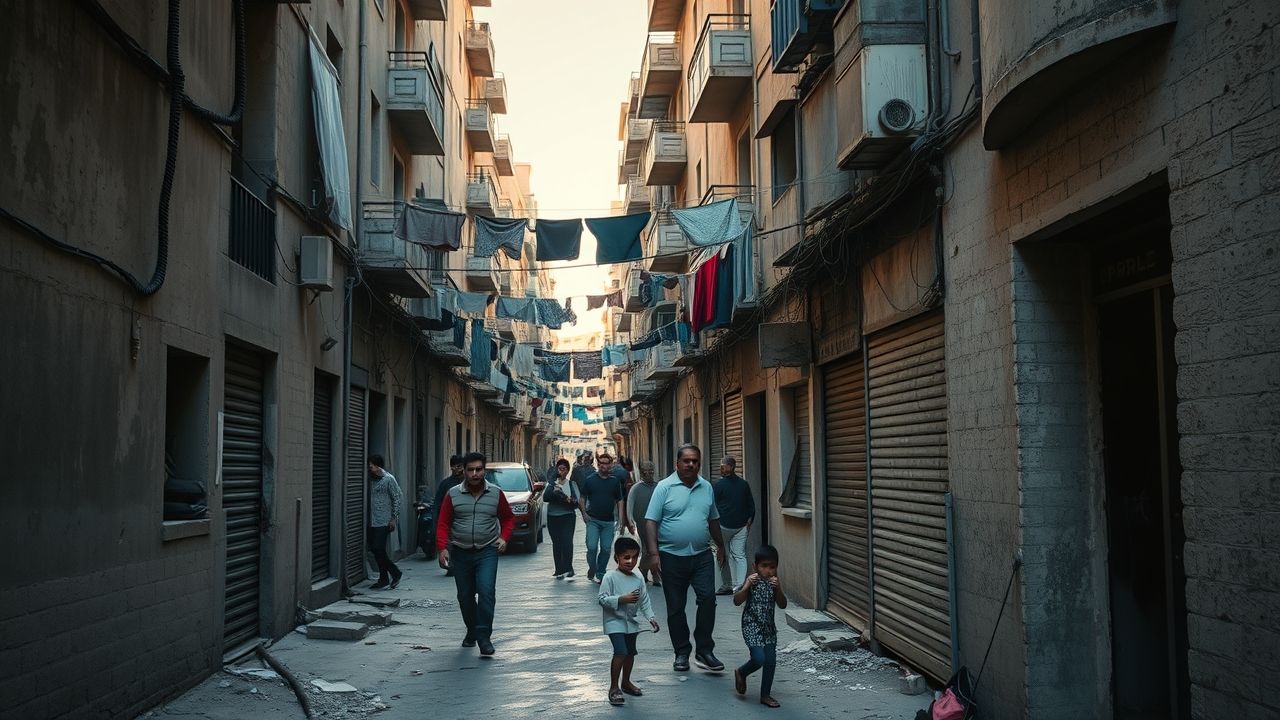Gaza: Unraveling the Complexities Through a Seasoned Journalist’s Lens
The situation in Gaza remains one of the world’s most enduring and complex humanitarian and political crises. For decades, this densely populated strip of land has been at the epicenter of a conflict that transcends borders, drawing international attention and concern. Understanding Gaza requires more than just headlines; it demands a deep dive into its rich history, the realities of daily life under blockade, and the intricate web of geopolitical factors at play. As a seasoned journalist who has covered this beat for many years, I aim to provide a nuanced perspective, integrating verified facts and field reporting to shed light on a territory often misunderstood.
Key Summary
- Historical Context: Understanding the origins of the conflict and the establishment of the blockade is crucial.
- Humanitarian Crisis: The severe impact of prolonged isolation on Gaza’s infrastructure, economy, and healthcare.
- Political Dynamics: The role of various factions and international actors in shaping Gaza’s present and future.
- Civilian Impact: The profound personal toll on the residents of Gaza, especially women and children.
- Pathways Forward: Exploring the challenges and possibilities for sustainable peace and development.
Why This Story Matters
The plight of Gaza is not merely a regional issue; it has profound global implications. It is a critical litmus test for international law, human rights, and the efficacy of humanitarian aid. The prolonged blockade and recurrent escalations contribute to regional instability, impacting broader geopolitical strategies and fostering radicalization. Economically, Gaza’s stagnation hinders regional development and creates a significant aid dependency. From a human rights perspective, the restrictions on movement, access to basic services, and persistent conflict raise fundamental questions about dignity and freedom. Ignoring Gaza means overlooking a major contributing factor to regional unrest and a profound human tragedy that demands sustained global attention and a concerted effort towards a just and lasting solution.
Main Developments & Context
The history of Gaza is deeply intertwined with the broader Israeli-Palestinian conflict. Originally part of the British Mandate of Palestine, Gaza came under Egyptian administration following the 1948 Arab-Israeli War. In 1967, during the Six-Day War, it was occupied by Israel, which maintained a significant military presence and established settlements there. A pivotal moment came in 2005 when Israel unilaterally disengaged from Gaza, withdrawing its troops and dismantling its settlements. However, following Hamas’s takeover in 2007, Israel and Egypt imposed a comprehensive blockade, citing security concerns. This blockade has severely restricted the movement of goods and people, transforming Gaza into what many describe as an “open-air prison.”
The Impact of the Blockade
Reporting from the heart of the community, I’ve seen firsthand the devastating effects of the blockade. It has crippled Gaza’s economy, leading to staggering unemployment rates, particularly among youth. Industries struggle to import raw materials and export goods, stifling any potential for growth. Healthcare services are perpetually on the brink of collapse due to shortages of essential medicines, equipment, and electricity. Infrastructure, including water treatment plants and sewage systems, is dilapidated, leading to widespread health hazards. The blockade also limits the freedom of movement for students, patients, and professionals, isolating Gaza from the rest of the world and severely impacting its human capital development.
Recurrent Escalations
Over the past two decades, Gaza has endured multiple large-scale military operations, each leaving a trail of destruction and trauma. These escalations, often triggered by rocket fire from Gaza and retaliatory strikes, have decimated residential areas, critical infrastructure, and vital services. The cycle of violence further exacerbates the humanitarian crisis, displaces thousands, and leaves deep psychological scars on the population, especially children who have known little else but conflict.
Expert Analysis / Insider Perspectives
In my 12 years covering this beat, I’ve found that true understanding of Gaza often comes from those on the ground. Aid workers describe a population exhibiting remarkable resilience, yet pushed to their absolute limits. Dr. Youssef Abu-Rayan, a physician in Gaza City, once told me, “Every day is a struggle to provide basic care with insufficient resources. We improvise, we adapt, but the toll on our patients and staff is immense.” International legal experts often highlight the complexities of applying international humanitarian law in such a densely populated and contested area, emphasizing the paramount importance of civilian protection.
“The situation in Gaza is not just a political problem; it’s a humanitarian catastrophe unfolding in slow motion, punctuated by periods of intense violence. Sustainable solutions must prioritize human dignity and open up pathways for economic recovery.”
— International Aid Coordinator
From a political analyst’s viewpoint, the fragmentation of Palestinian leadership and the ongoing internal divisions within Gaza complicate any peace efforts. The international community’s role is often debated, with some arguing for stronger diplomatic intervention and others for increased humanitarian aid as a primary focus. My field observations suggest that any lasting peace will require a multifaceted approach that addresses both security concerns and the fundamental human needs and aspirations of the people of Gaza.
Common Misconceptions
One common misconception is that the situation in Gaza is static or simple. In reality, it is a highly dynamic and intricate environment shaped by internal politics, regional power struggles, and international pressures. Another fallacy is that providing humanitarian aid alone can solve the crisis. While critical, aid is a temporary palliative; it does not address the root causes of the conflict, such as the blockade, political stalemates, and the absence of a viable path to self-determination and economic independence. Furthermore, the narrative often oversimplifies the diverse opinions and experiences within Gaza, painting its population with a single brush, when in fact, there are varied perspectives, hopes, and fears among its residents.
Frequently Asked Questions
What is the Gaza Strip?
The Gaza Strip is a small, densely populated Palestinian territory on the eastern coast of the Mediterranean Sea, bordering Egypt and Israel. It is one of the two Palestinian territories, the other being the West Bank.
Why is Gaza under blockade?
Israel and Egypt imposed a blockade on Gaza in 2007 after Hamas took control of the territory, citing security concerns regarding rocket fire and arms smuggling.
What are the main humanitarian challenges in Gaza?
Gaza faces severe challenges including high unemployment, poverty, inadequate access to clean water and electricity, a struggling healthcare system, and food insecurity, all exacerbated by the blockade and conflict.
Who governs Gaza?
The Gaza Strip is governed by Hamas, an Islamist political and militant organization, which took de facto control of the territory in 2007.
What is the population of Gaza?
Gaza is one of the most densely populated areas in the world, with a population of over 2 million people living in an area of approximately 365 square kilometers (141 square miles).








